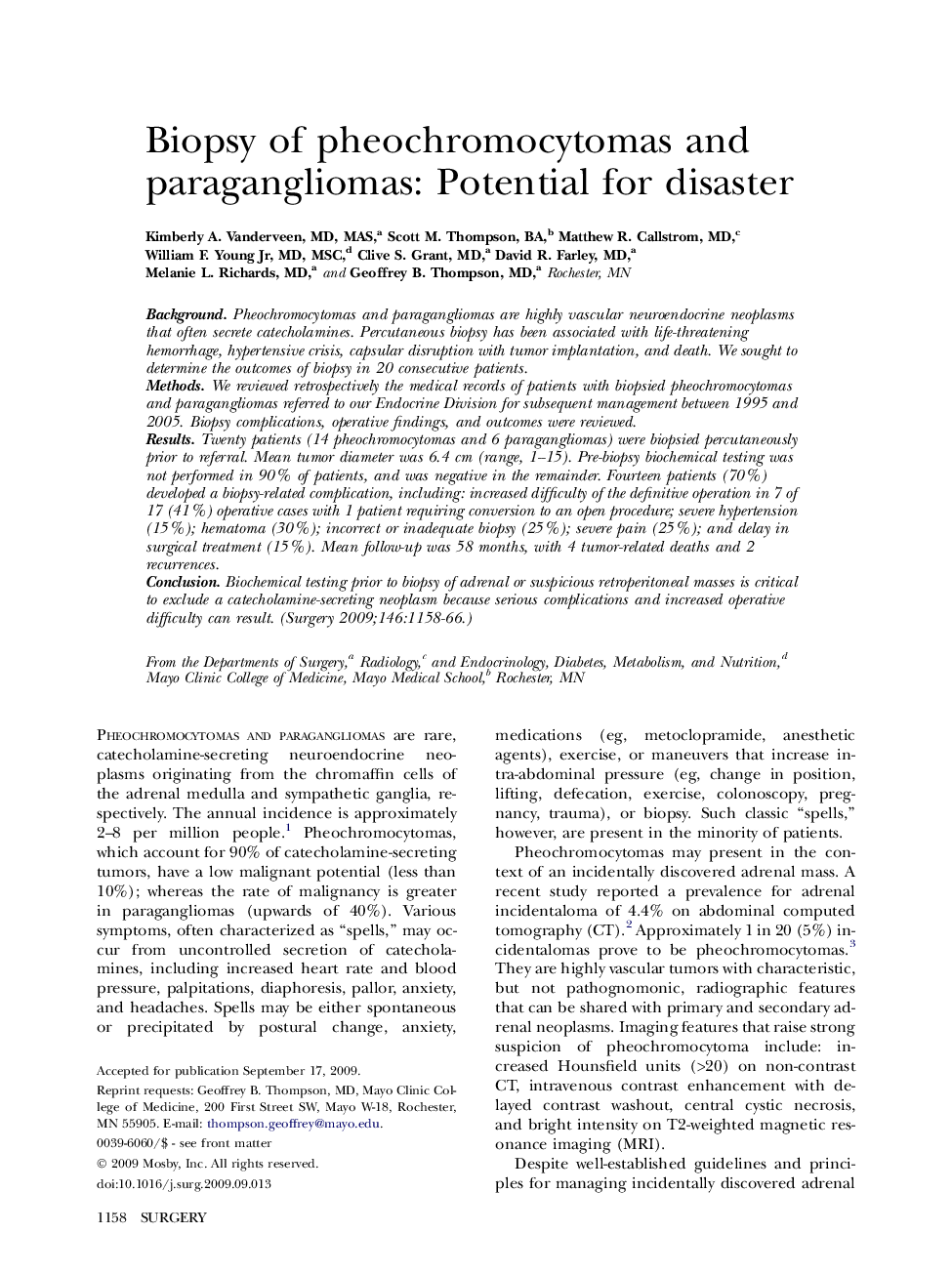| Article ID | Journal | Published Year | Pages | File Type |
|---|---|---|---|---|
| 4309119 | Surgery | 2009 | 9 Pages |
BackgroundPheochromocytomas and paragangliomas are highly vascular neuroendocrine neoplasms that often secrete catecholamines. Percutaneous biopsy has been associated with life-threatening hemorrhage, hypertensive crisis, capsular disruption with tumor implantation, and death. We sought to determine the outcomes of biopsy in 20 consecutive patients.MethodsWe reviewed retrospectively the medical records of patients with biopsied pheochromocytomas and paragangliomas referred to our Endocrine Division for subsequent management between 1995 and 2005. Biopsy complications, operative findings, and outcomes were reviewed.ResultsTwenty patients (14 pheochromocytomas and 6 paragangliomas) were biopsied percutaneously prior to referral. Mean tumor diameter was 6.4 cm (range, 1–15). Pre-biopsy biochemical testing was not performed in 90% of patients, and was negative in the remainder. Fourteen patients (70%) developed a biopsy-related complication, including: increased difficulty of the definitive operation in 7 of 17 (41%) operative cases with 1 patient requiring conversion to an open procedure; severe hypertension (15%); hematoma (30%); incorrect or inadequate biopsy (25%); severe pain (25%); and delay in surgical treatment (15%). Mean follow-up was 58 months, with 4 tumor-related deaths and 2 recurrences.ConclusionBiochemical testing prior to biopsy of adrenal or suspicious retroperitoneal masses is critical to exclude a catecholamine-secreting neoplasm because serious complications and increased operative difficulty can result.
